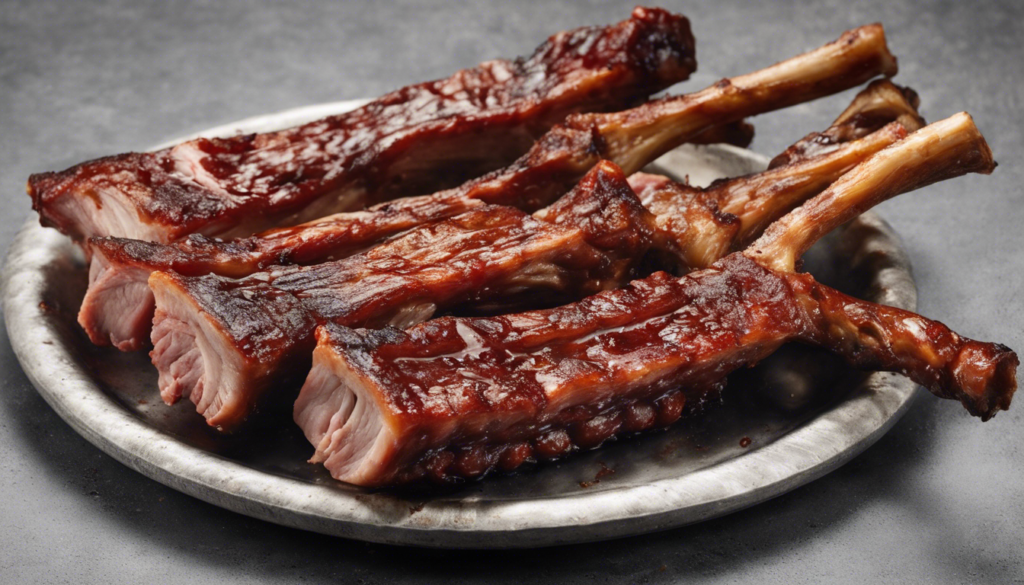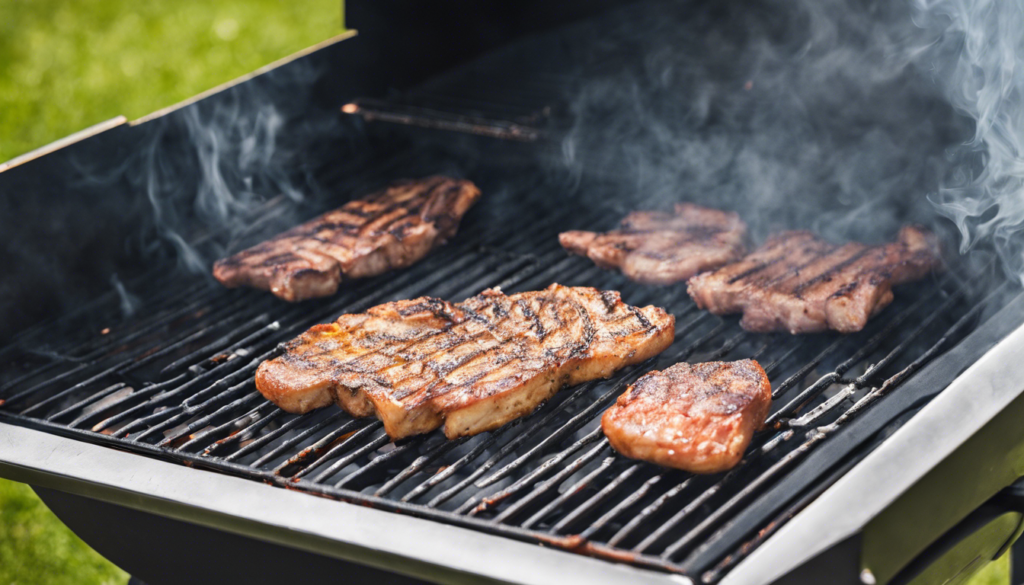Rib Lover’s Delight: Perfecting the Art of Smoking Pork Riblets
Imagine the aroma of smoky, tender pork riblets wafting through your backyard as you entertain your friends and family. The art of smoking ribs is a culinary skill that impresses and delights, offering a unique flavor experience that is deeply satisfying. This comprehensive guide will take you on a journey through the world of smoking pork riblets, from understanding the anatomy of the rib to mastering the smoking process, and even pairing your smoked delights with the perfect sides and drinks.
Mastering the art of smoking ribs is not just about creating delicious meals, it’s also about the joy of the process. The patience required, the anticipation of the end result, and the pride in knowing you’ve created something truly special. So, let’s embark on this flavorful journey together!
Understanding Pork Riblets
Pork riblets are smaller portions of a full rack of ribs, often cut from the lower end of the rib cage. They are small, meaty, and full of flavor, making them a popular choice for smoking. Riblets can be prepared in a variety of ways, but smoking them brings out a depth of flavor that is truly unparalleled.
There are different types of pork ribs, including baby back ribs, spare ribs, and St. Louis style ribs. Each type has its unique characteristics in terms of meatiness, fat content, and flavor, but for this guide, we will focus on riblets, which are essentially smaller portions of these rib types.
Knowing the different types of pork ribs can help you in your smoking journey. Here’s a brief overview:
| Type of Rib | Characteristics |
|---|---|
| Baby Back Ribs | Lean, tender, and quick to cook |
| Spare Ribs | Meaty, fatty, and full of flavor |
| St. Louis Style Ribs | Trimmed spare ribs with a uniform shape |
The Art of Smoking Ribs
The art of smoking ribs has a long history, tracing back to ancient cultures where smoking was used as a preservation method. Over time, smoking evolved into a cooking technique appreciated for its ability to impart deep, complex flavors into the meat. Today, smoking ribs is a cherished tradition, especially in regions known for their barbecue culture, such as the Southern United States.
So, why is smoking a preferred method for cooking ribs? Smoking allows for slow cooking at low temperatures, which results in tender, juicy meat that falls off the bone. The smoke also infuses the meat with a distinctive flavor that cannot be achieved with other cooking methods. Whether you’re a fan of sweet, spicy, or tangy flavors, smoking allows you to experiment with different rubs and sauces to create your own signature ribs.
Essential Tools for Smoking Pork Riblets
Choosing the right smoker is crucial in the art of smoking ribs. There are several types of smokers available, including charcoal smokers, electric smokers, and pellet smokers. Each type has its pros and cons, so it’s important to choose one that suits your needs and preferences.
Other necessary tools and equipment for smoking ribs include a good quality meat thermometer, tongs, a basting brush, and aluminum foil. A rib rack can also be useful for smoking multiple racks of riblets at once.
Here’s a quick comparison of different types of smokers:
| Type of Smoker | Pros | Cons |
|---|---|---|
| Charcoal Smoker | Provides a strong, smoky flavor | Requires constant monitoring |
| Electric Smoker | Easy to use and control temperature | May not provide as strong a smoky flavor |
| Pellet Smoker | Provides a consistent temperature and smoky flavor | Can be expensive |
Selecting the Best Pork Riblets
When it comes to smoking ribs, the quality of the meat matters. Factors to consider when buying pork riblets include the freshness of the meat, the color (it should be a nice pink color), and the amount of meat on the bones. The ribs should also have a good amount of fat, as this will keep the meat moist during the smoking process.
Quality pork riblets can be found at local butcher shops, farmers’ markets, and even some supermarkets. It’s always a good idea to talk to the butcher and ask for their recommendations. They can also help you with trimming the ribs if needed.
Preparing Pork Riblets for Smoking
Before smoking your riblets, you’ll need to clean and trim them. This involves removing the membrane on the back of the ribs, which can be tough and chewy. You’ll also want to trim any excess fat, as too much can cause flare-ups during the smoking process.
Marinating the riblets is an essential step in the preparation process. This not only adds flavor but also helps to tenderize the meat. A basic marinade might include ingredients like apple cider vinegar, brown sugar, and your choice of spices. Remember, the longer you marinate the riblets, the more flavor they’ll have.
Choosing the Right Wood for Smoking
The type of wood you use for smoking can greatly influence the flavor of your ribs. Different types of wood impart different flavors, ranging from sweet to strong and smoky. Some popular choices for smoking pork include applewood, hickory, and mesquite.
For pork riblets, applewood is a great choice. It imparts a mild, sweet flavor that complements the pork nicely. Hickory is another good option, offering a stronger, smokier flavor. Ultimately, the best wood for smoking pork riblets depends on your personal taste preferences.
The Smoking Process
Now that you’ve prepared your riblets and chosen your wood, it’s time to get smoking! The smoking process involves several steps, including preheating the smoker, placing the riblets in the smoker, and maintaining the right temperature throughout the cooking process.
Temperature control and timing are crucial when smoking ribs. You want to maintain a consistent low temperature to ensure the ribs cook slowly and evenly. This also allows the smoke to permeate the meat and infuse it with flavor. The cooking time will depend on the size of the riblets, but generally, they should be smoked for about 4-5 hours.
Rib Lover’s Delight: Perfecting the Rub and Sauce
A great rub and sauce can elevate your smoked riblets to a whole new level. The rub is a mixture of spices that is applied to the ribs before smoking, while the sauce is typically brushed on towards the end of the cooking process or served on the side.
Making the perfect rib rub is all about balance. You want a mix of sweet, salty, and spicy flavors. Some common ingredients include brown sugar, paprika, cayenne pepper, and garlic powder. As for the sauce, it should complement the flavors of the rub. A classic barbecue sauce with a hint of smokiness works well with smoked riblets.
Serving and Pairing Suggestions
Smoked pork riblets are a versatile dish that can be served in a variety of ways. You can serve them as is, or pull the meat off the bones and use it in sandwiches, tacos, or salads. They also make a great appetizer or main dish for backyard barbecues and parties.
As for side dishes, smoked riblets pair well with classic barbecue sides like coleslaw, baked beans, and cornbread. They also go well with a cold beer or a glass of sweet iced tea. Here are some pairing suggestions:
| Side Dish | Drink |
|---|---|
| Coleslaw | Iced Tea |
| Baked Beans | Cold Beer |
| Cornbread | Lemonade |
Common Mistakes to Avoid When Smoking Pork Riblets
Even seasoned grill masters can make mistakes when smoking ribs. One common mistake is over-smoking the ribs, which can result in a bitter taste. To avoid this, make sure you’re not adding too much wood to the smoker and that the smoke is thin and blue, not thick and white.
Another mistake is not letting the ribs rest after smoking. Resting allows the juices to redistribute throughout the meat, resulting in a more flavorful and juicy rib. So, resist the temptation to dig in right away and let your ribs rest for at least 15 minutes before serving.
Tips and Tricks for Perfect Smoked Pork Riblets
Mastering the art of smoking ribs takes practice, but with a few tips and tricks, you can enhance the flavor and achieve perfect results every time. For instance, applying a mustard slather before the rub can help the spices stick to the meat and add an extra layer of flavor. You can also spray the ribs with apple juice during the smoking process to keep them moist and add a touch of sweetness.
Another trick is to wrap the ribs in foil for the last hour of smoking. This is known as the Texas Crutch, and it helps to tenderize the meat and speed up the cooking process. Just be sure to unwrap the ribs for the last 15 minutes to allow the bark to set.
Health Benefits of Pork Riblets
While pork riblets are often enjoyed for their flavor, they also have some health benefits. They are a good source of protein, which is essential for muscle growth and repair. They also contain vitamins and minerals like vitamin B12, zinc, and iron.
However, like any meat, pork riblets should be consumed in moderation as part of a balanced diet. Pairing them with healthy sides like grilled vegetables or a fresh salad can help to balance out the meal.
Conclusion: Mastering the Art of Smoking Pork Riblets
We’ve covered a lot of ground in this guide, from understanding pork riblets and the art of smoking ribs to choosing the right tools and perfecting the rub and sauce. We’ve also shared some tips and tricks to help you achieve perfect results every time. Smoking pork riblets is a labor of love, but with patience and practice, you can master this culinary art and impress your friends and family with your smoky, tender, flavorful creations.
So why wait? Embrace the challenge, fire up your smoker, and start your journey to becoming a rib smoking master. Happy smoking!
Reader Engagement
We’d love to hear about your experiences with smoking ribs. Have you tried smoking pork riblets before? Do you have any tips or tricks to share? Feel free to leave a comment or question below. Your insights and experiences can help other readers in their smoking journey.
FAQs
Q: What are pork riblets?
A: Pork riblets are smaller portions of a full rack of ribs, often cut from the lower end of the rib cage. They are small, meaty, and full of flavor, making them a popular choice for smoking.
Q: Why is smoking a preferred method for cooking ribs?
A: Smoking allows for slow cooking at low temperatures, which results in tender, juicy meat that falls off the bone. The smoke also infuses the meat with a distinctive flavor that cannot be achieved with other cooking methods.
Q: What is the best wood for smoking pork riblets?
A: The best wood for smoking pork riblets depends on your personal taste preferences. Some popular choices include applewood, hickory, and mesquite.


